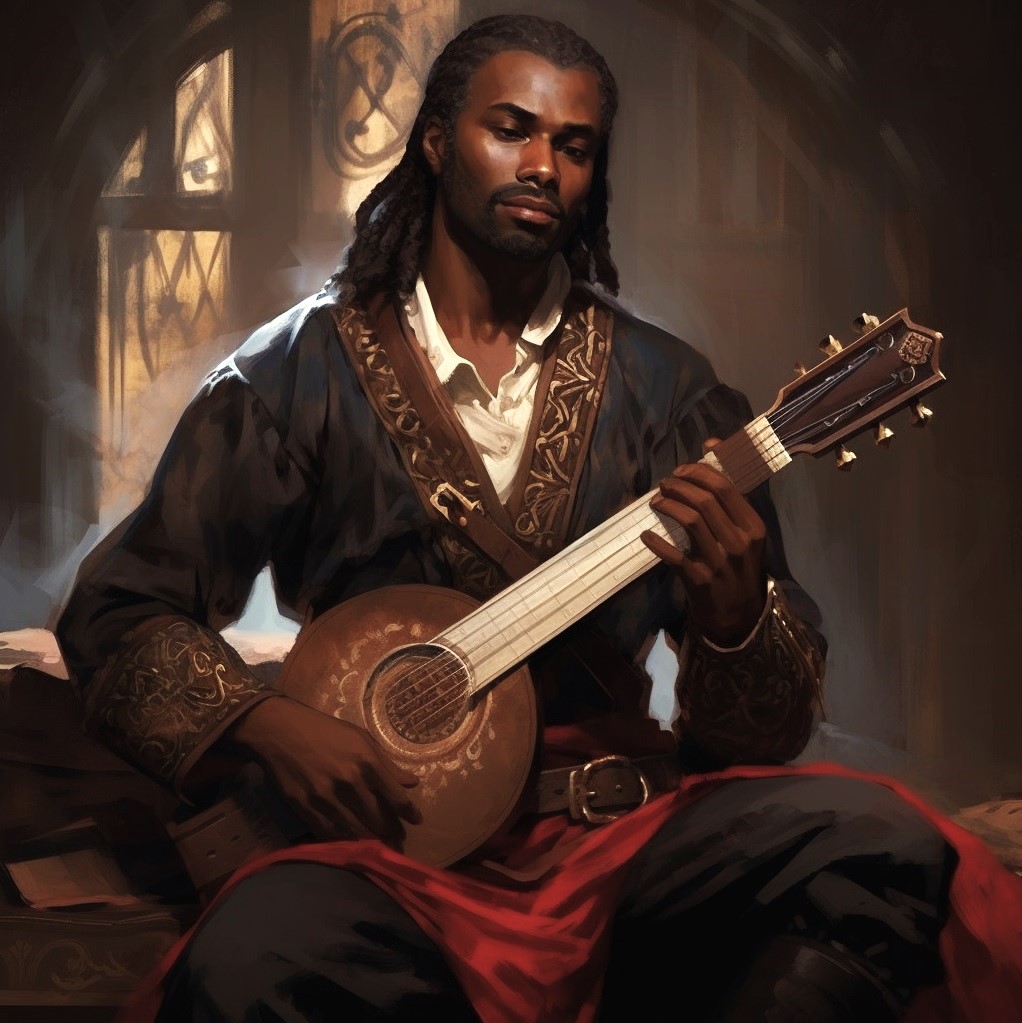Music (sage field)
Music is a sage field available to bards, involving the creation and performance of music as an essential element of cultural expression, weaving itself through the fabric of daily life, ritual and ceremony. It encompasses the study and practice of creating, performing and understanding sound as an organised, structured art form. Rooted in centuries of tradition and development, music is a deliberate and often scientific exploration of melody, harmony, rhythm, form and texture. It is shaped by cultural innovations and theories developed to formalise the relationships between tones, scales and modes, as well as the mechanics of instruments and voice.
By the 17th century, music has established itself as a highly developed discipline, encompassing both sacred and secular traditions. The theoretical study of music, often referred to as "musica speculativa," involves the mathematical and physical principles underpinning harmony and acoustics. These theories influence the practice of composition and performance, allowing musicians to craft pieces that adhere to specific rules of balance and proportion while also exploring creative expression.
As a field, music includes the examination of historical practices such as Gregorian chant, polyphonic forms like the motet and madrigal, and the rise of instrumental music in forms like the toccata, sonata and suite. It also involves the investigation of innovations in musical notation, which enabled composers to communicate their ideas more precisely, and the evolution of instruments, which expanded the possibilities of performance.
The field includes the following sage studies:
- Folk Music (sage study): represents the voice of the common people, characterized by its simplicity and accessibility. This study focuses on the techniques and traditions of orally transmitted music, often tied to specific regions, ethnicities or historical periods. Students of this discipline learn the melodies, rhythms and structures that define folk songs as well as their cultural and symbolic significance. Instruments commonly associated with folk music, such as lutes, fiddles and flutes, are explored for their role in creating and maintaining the communal identity of a people.
- Martial Music (sage study): a practical study of compositions designed for military use. This includes the development of structured signals such as bugle calls and drum cadences to communicate commands over distances during battle or manoeuvres. Students of this discipline examine the psychological impact of martial music on troops both as a tool for synchronising movements and as a means of bolstering morale. The field also covers the composition of fanfares and other ceremonial pieces that glorify military victories or mark the formalities of war.
- Opera (sage study): storytelling through music, combining vocal and instrumental forms to create theatrical works that express narrative, emotion and complex themes. Students of this discipline delve into the techniques of composition and performance required to craft compelling arias, duets, choruses and orchestral interludes. The study also involves an understanding of staging, librettos and the interplay of music with visual and dramatic elements.
- Religious Music (sage study): dedicated to compositions that elevate worship, accompany rituals or inspire piety. This study focuses on sacred traditions such as Gregorian chant, hymnody and large-scale works like masses, oratorios and cantatas. Students learn the forms and modes that define religious compositions as well as the techniques for writing music intended to evoke reverence and awe. The study also explores the role of music as a medium for theological expression and its use in fostering communal worship.
